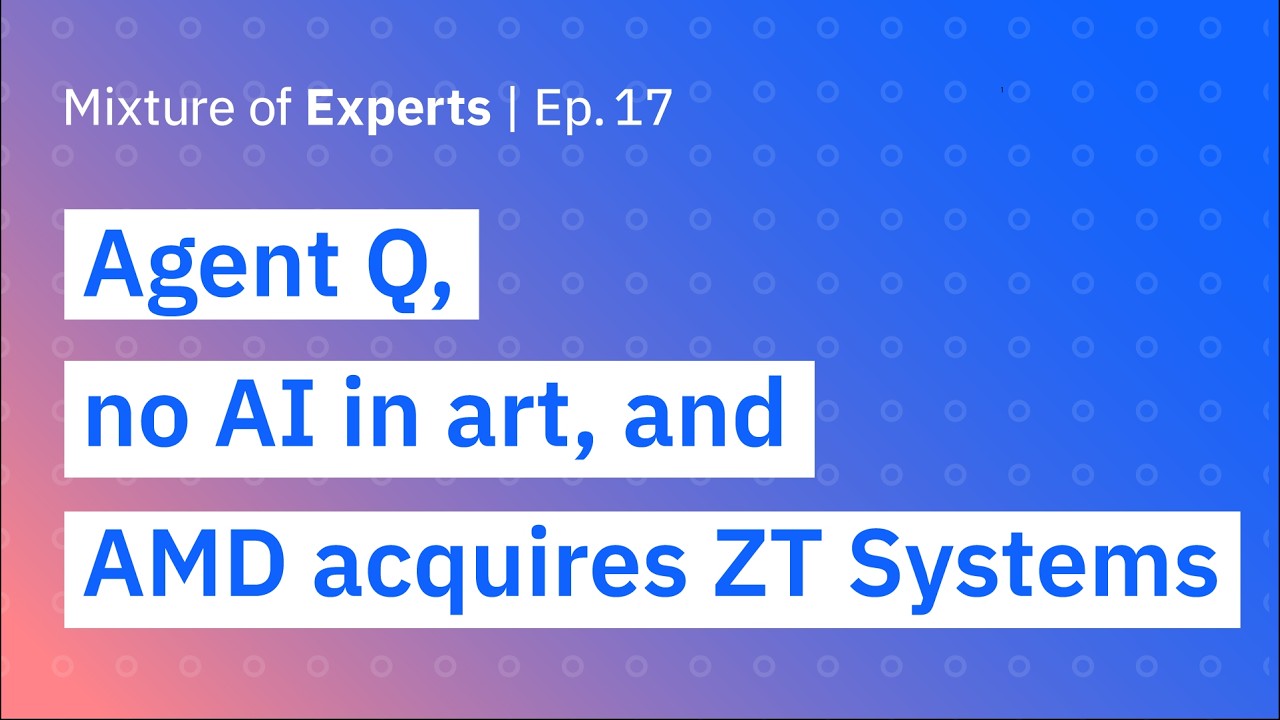In a recent episode of “Mixture of Experts,” the panel discussed advancements in AI reasoning and planning, highlighting the limitations of large language models (LLMs) and the need for hybrid architectures that integrate various techniques. The conversation also touched on the implications of AI in creative fields, AMD’s acquisition of ZT Systems to enhance its AI hardware capabilities, and the ongoing skills gap in the AI industry.
In a recent episode of “Mixture of Experts,” host Brian Casey and a panel of experts discussed the evolving landscape of AI agents, particularly focusing on reasoning and planning capabilities. The conversation began with a reference to a paper released by the company Mulon, which demonstrated improvements in reasoning through the use of large language models (LLMs) combined with techniques like search and reinforcement learning. The panelists debated whether advancements in AI would stem from scaling compute, algorithmic progress, or traditional software engineering, with differing opinions on the best approach to enhance reasoning capabilities in AI.
Skylar Speakman highlighted the limitations of LLMs in reasoning, noting that while they excel at creating a model of the world, they lack the motivation to explore it effectively. The panel discussed the importance of integrating planning and reasoning with LLMs to enable them to execute actions based on their world models. Chris Haye pointed out that the Mulon paper showcased a hybrid architecture that leverages LLMs for self-reflection and planning while relying on external tools for execution, indicating a trend in the industry toward combining various techniques to enhance AI agents’ capabilities.
The discussion then shifted to the broader implications of AI in creative fields, particularly in response to the CEO of Procreate’s declaration against incorporating generative AI into their products. The panel noted the contrasting reactions from different creative communities, with software engineers generally embracing LLMs as productivity tools, while writers and artists expressed concerns about the potential loss of craftsmanship and job security. This divergence in sentiment reflects the varying impacts of AI on different professions, raising questions about the future of creativity in an increasingly automated landscape.
As the conversation progressed, the panelists explored the potential for general-purpose AI agents versus task-specific solutions. Skylar expressed skepticism about the emergence of general-purpose agents within the next couple of years, suggesting that while advancements may occur in specific areas, the complexity of mundane business processes would require more time to develop reliable systems. The panelists agreed that while AI could excel in creative tasks, the trust required for executing critical business functions would take longer to establish.
Finally, the discussion turned to AMD’s recent acquisition of ZT Systems, emphasizing the importance of moving from a focus on silicon to integrated systems in the AI hardware market. The panelists analyzed the competitive landscape, noting that while Nvidia currently dominates the GPU market, AMD’s acquisition aims to enhance its capabilities in building large-scale training systems. The conversation concluded with reflections on the ongoing skills gap in the AI field, with varying perspectives on whether the shortage of expertise is improving or remains a significant barrier to progress in AI development.
